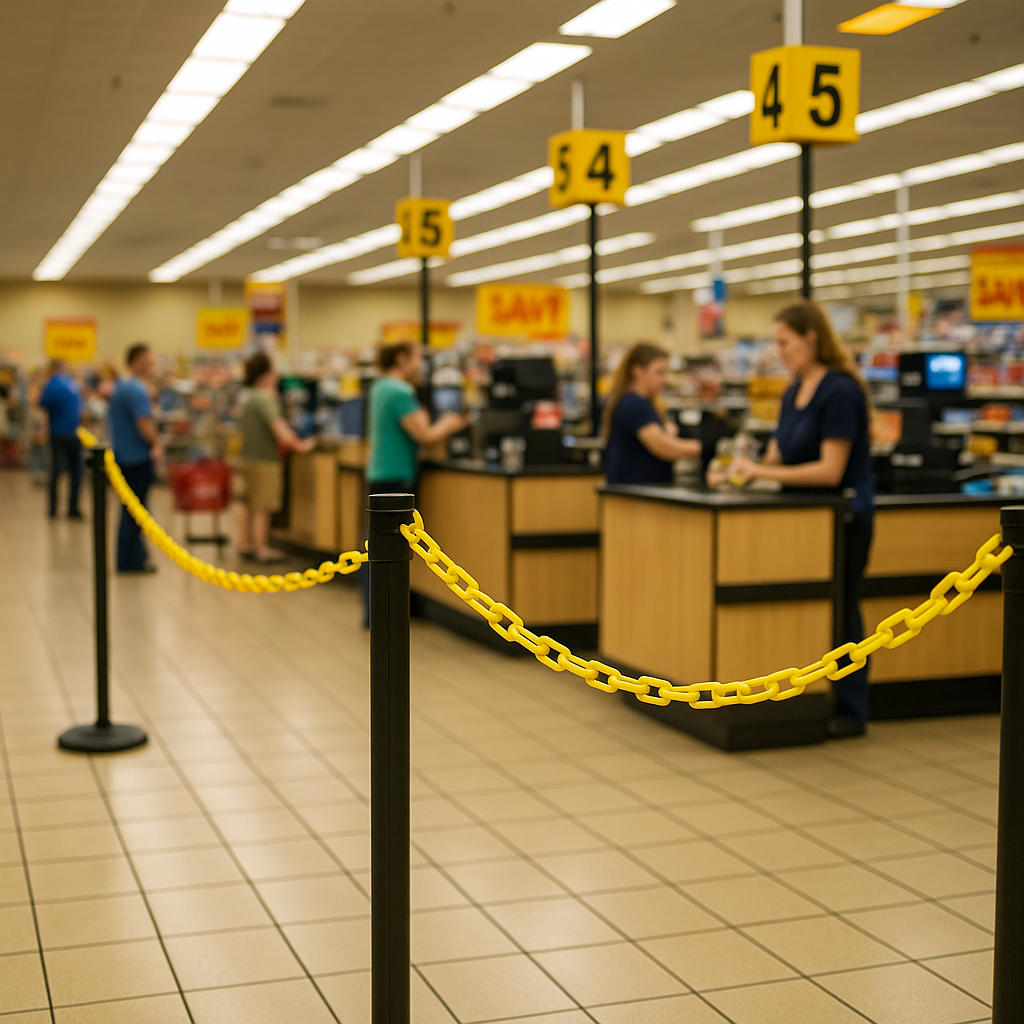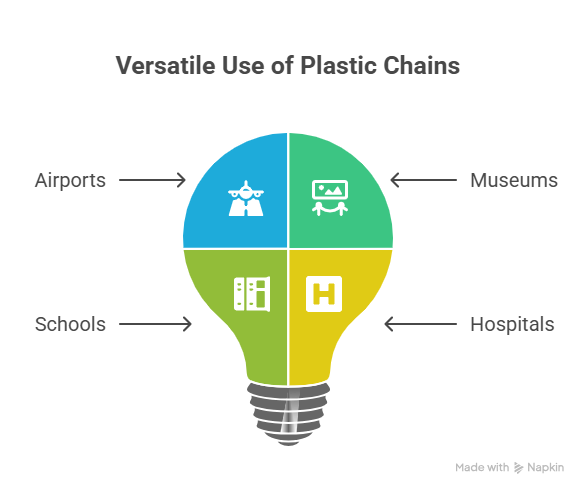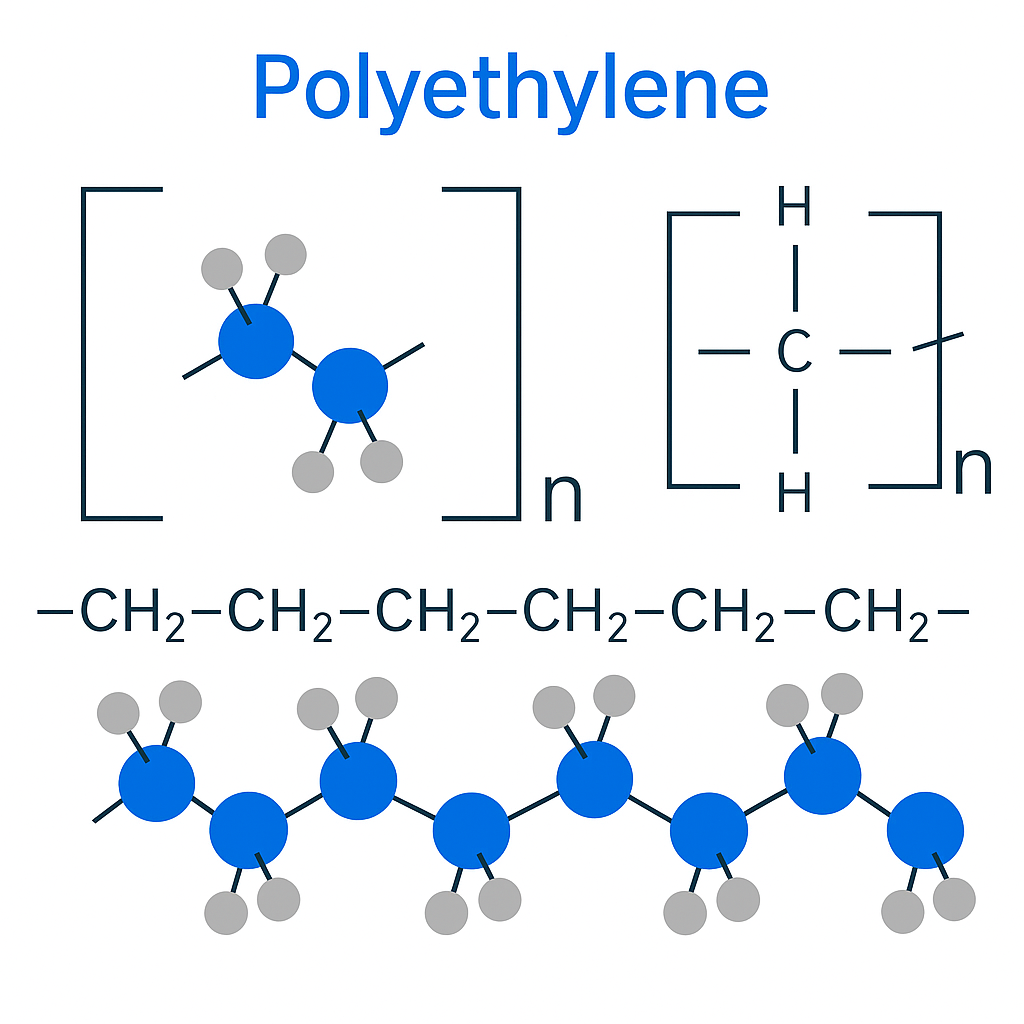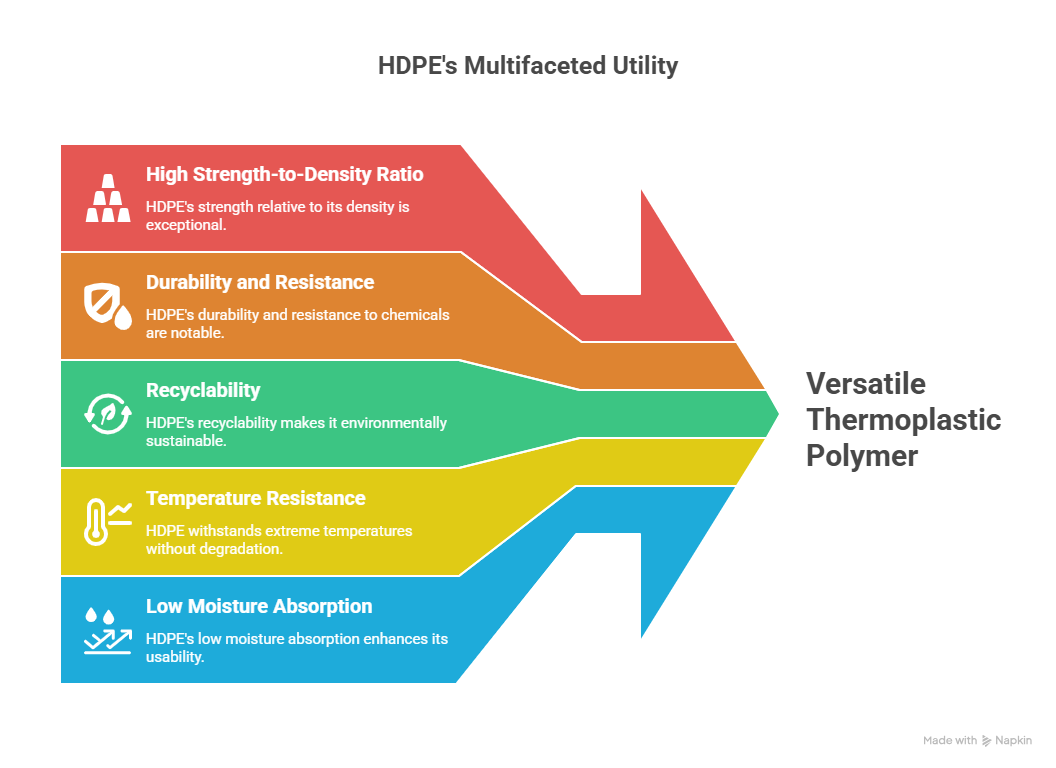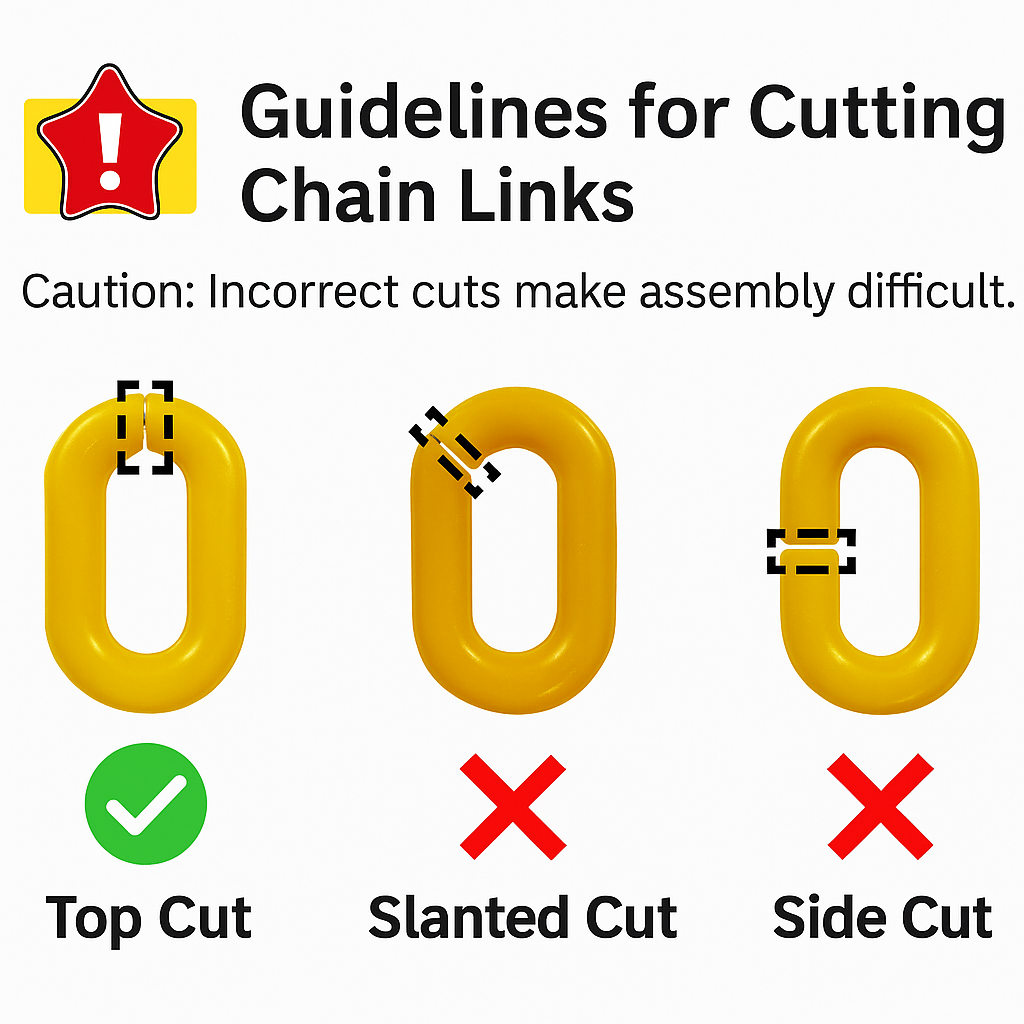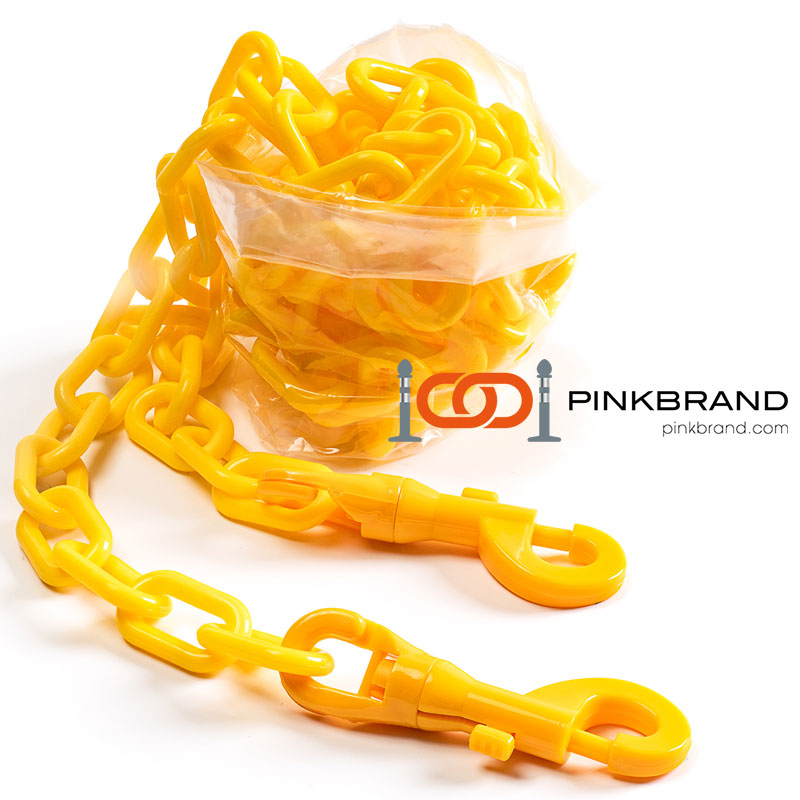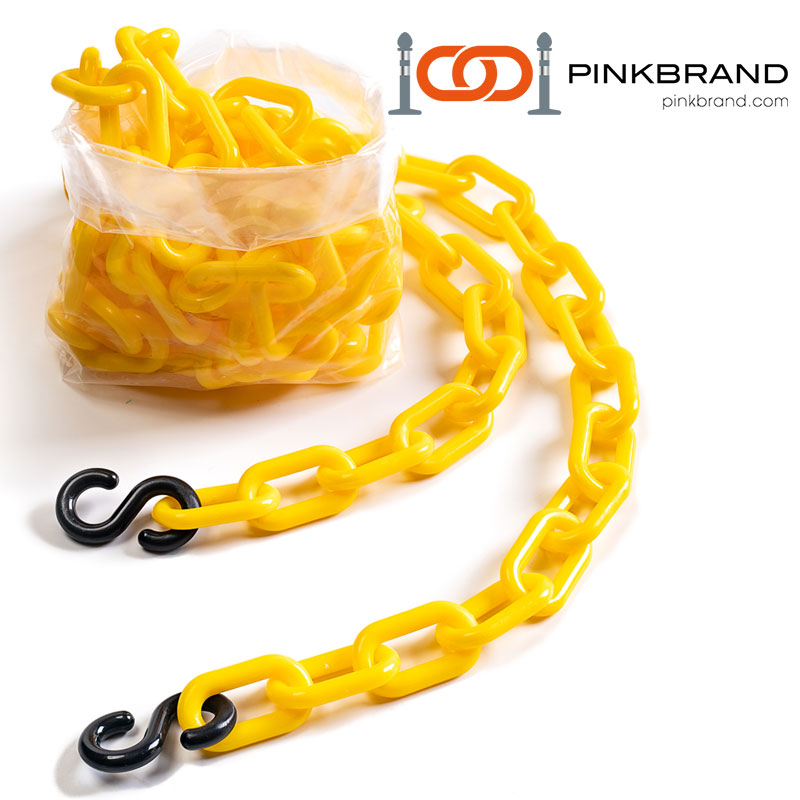A Practical Guide to Safety, Flexibility, and Visibility
In environments where safety and organization are paramount—construction sites, manufacturing floors, warehouses, and public venues—procurement managers are constantly seeking solutions that are reliable, easy to deploy, and cost-effective. Plastic yellow chains have quietly become a go-to safety tool across industries. Lightweight yet durable, these highly visible chains offer a simple way to mark boundaries, control pedestrian flow, and protect both people and property.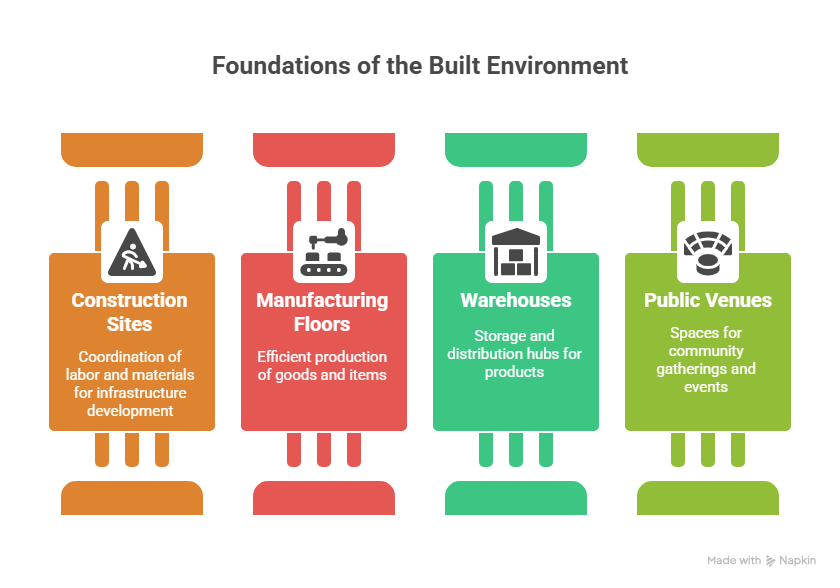
Whether you’re outfitting a fast-paced job site or planning a large-scale event, yellow plastic chains provide the clarity and flexibility your team needs. This guide explores how and why procurement teams are integrating these chains into daily operations, and how they can help you solve everyday spatial and safety challenges with style and ease.
Safety First: Why Visual Barriers Matter in Industrial and Public Settings
If your work involves managing operational safety in dynamic environments, you know that clearly defined areas are more than just a visual aid — they are an effective way to reduce liability. Yellow plastic chains can serve as an immediate and highly visible marker, alerting employees, visitors, and contractors to restricted zones, potential hazards, or controlled access areas.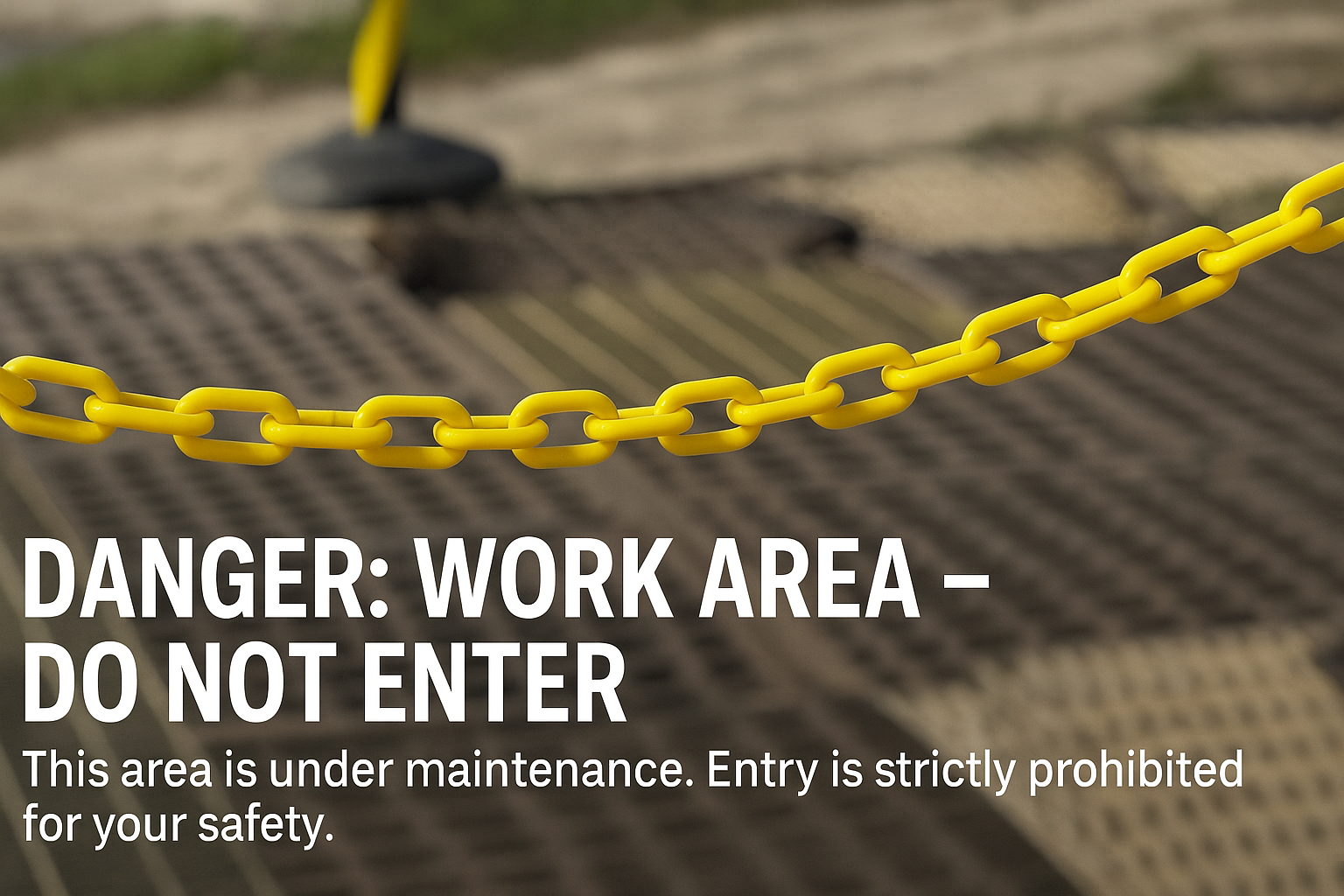
In construction and industrial settings, these chains are invaluable for:
- Delineating high-risk zones around heavy machinery or ongoing projects
- Creating temporary safety zones during maintenance or shift transitions
- Offering fast, tool-free setup for dynamic work environments
Their vibrant yellow hue commands attention—far more than tape or cones—helping to prevent accidents before they happen. And because they’re resistant to rust and weather, they work just as well outdoors as they do inside your facility.
Takeaway:
If you’re looking for a safety solution that combines visibility, mobility, and ease of use, plastic yellow chains should be a key item in your facility’s safety toolkit.
More Than Safety: Flexible Applications Across Industries
As a procurement manager, you’re often sourcing products that can serve multiple functions—especially when budgets and storage space are tight. One of the major advantages of plastic yellow chains is their adaptability. Beyond safety, they’re used across sectors to manage flow, guide behavior, and even enhance experiences.
Here’s how different industries are putting them to work:
- Event Management: From outdoor festivals to corporate expos, planners rely on plastic yellow chains to create intuitive walkways, manage lines, and separate restricted areas. Quick to set up and reposition, they help maintain order without the need for permanent structures.
- Retail & Commercial Spaces: During peak hours or in-store promotions, these chains can define checkout lanes, block off restocking zones, or direct customers toward featured displays. Their visibility supports both crowd control and a better shopper experience.

- Facilities & Public Venues: Airports, museums, schools, and hospitals use plastic chains to establish temporary partitions, direct traffic, or restrict access during maintenance hours. They’re clean, professional, and reusable.

Takeaway:
Plastic yellow chains aren’t a one-trick product—they solve multiple spatial problems with a single, affordable solution.
Functional Visibility That Supports Brand Experience
Visual impact matters—especially in spaces where crowd flow, safety, and brand experience intersect. Plastic yellow chains don’t just serve a purpose; they also send a message. Their bright, universally recognized color makes them ideal for signaling boundaries without appearing overly harsh or industrial.
In event setups and branded environments, procurement teams are leveraging these chains for both form and function:
- Outdoor Events & Installations: Yellow chains can guide guests subtly while blending into festive decor. When used in garden parties, pop-up stores, or open-air exhibitions, they add structured flow without visual clutter.
- Hospitality & Dining: Cafes and restaurants use yellow chains to section off patio areas, manage guest lines, or delineate private zones. When paired with lighting or signage, they complement the space’s design rather than detract from it.
- Retail Displays & Showrooms: Brands can use them to guide foot traffic while reinforcing visual themes—especially in industrial-style or safety-conscious product settings.
Takeaway:
A well-placed yellow chain doesn’t just organize a space—it communicates intent. Used thoughtfully, it becomes part of the customer experience, not just a barrier.
What to Look For When Procuring Plastic Yellow Chains
Not all plastic chains are created equal—and as a procurement professional, selecting the right specification means fewer replacements, lower maintenance, and better overall performance. Here are the key features that define a high-quality plastic yellow chain:
- Durable, Weather-Resistant Materials
Look for chains made from HDPE (high-density polyethylene) , which resist fading, cracking, and brittleness due to UV exposure, rain, or heat. These materials ensure long-term performance, even in outdoor or industrial settings.

- Strong, Interlocking Link Design
Chains should have thick, well-formed links that don’t warp under tension. Inferior models often break or deform under minor pressure—reliable ones maintain structure and alignment through repeated use. - Lightweight but Structurally Sound
The best chains balance portability with resilience. You want something staff can deploy quickly without sacrificing strength. Especially in fast-paced environments, ease of handling is crucial. - Flexible Mounting Options
Hooks, connectors, and compatibility with stanchions or poles make a big difference. Pre-molded attachments reduce setup time and increase configuration possibilities. - Customizable Lengths and Sizes
Vendors offering multiple chain sizes and color options can better meet your space or brand-specific needs.
Takeaway:
Quality materials and engineering don’t just make chains last longer—they ensure safety and user confidence at every stage of use.
A Quick Guide to Installing Plastic Yellow Chains Effectively
Proper installation is key to ensuring your plastic yellow chains serve their full purpose—whether for safety, traffic control, or access management. Here’s a straightforward approach your operations team can follow:
- Assess the Area and Objective
Identify where the chain is needed and why—are you marking a hazardous zone, creating a queue line, or defining a temporary boundary? This will help determine the length, placement, and anchoring method. - Choose the Right Fixtures
For long-term use, install weather-resistant posts, wall mounts, or freestanding stanchions. Ensure they are stable enough to support chain tension without tipping or detaching. - Measure and Cut (If Required)
For bulk procurement, chains are typically supplied as a single continuous length—either on a reel or in bundled form—that requires cutting on site. Use a standard chain cutter to trim to the required length. For large-volume custom-length orders, please contact us for consultation.
- Use Secure Connectors
Secure the chain ends using durable hooks, quick links, or carabiners. These connectors should be rust-resistant and compatible with your stanchion system to ensure long-term safety and reliability.


- Test for Visibility and Tension
Once in place, step back and check sight lines. The chain should be taut enough to form a clear visual boundary but loose enough to avoid snapping under stress. - Plan for Adjustment
In dynamic environments (like warehouses or event setups), choose attachment systems that allow for quick relocation or resizing.
Takeaway:
Installation doesn’t require complex tools—just thoughtful planning and quality hardware. A proper setup maximizes both safety impact and operational efficiency.
Simple Maintenance, Long-Term Value
One of the reasons procurement managers favor plastic yellow chains is their low maintenance profile. With just a few simple routines, you can extend their lifespan significantly—reducing replacement frequency and total cost of ownership (TCO).
Here’s how to keep them in top shape:
- Regular Cleaning
Outdoor installations naturally collect dust, grime, or pollutants. A quick wipe with mild soap and water restores the color and prevents buildup. For larger setups, a periodic hose-down does the job. - Inspect for Wear and Fatigue
Even durable plastics can crack or stretch over time. Schedule visual inspections monthly to catch broken or brittle links early. Replacing a small section is faster and cheaper than re-installing an entire system. - Store Properly When Not in Use
If your chains are seasonal or event-based, store them in a cool, dry area away from sunlight. Coil them neatly to prevent tangling and stress on the links.
Takeaway:
With basic upkeep and smart storage, your yellow chains can stay functional and presentable for years—delivering exceptional value with minimal effort.
Why Choose Plastic Yellow Chains Over Other Barrier Options?
When evaluating barrier solutions, procurement professionals must balance safety performance, durability, ease of use, and cost. Here’s how plastic yellow chains compare to other common alternatives:
| Barrier Type | Pros | Cons |
|---|---|---|
| Metal Chains | Extremely durable, high load-bearing | Heavy, prone to rust, harder to install, overkill for light-duty needs |
| Ropes or Cords | Flexible, easy to carry | Low visibility, degrades quickly outdoors, lacks structure |
| Retractable Belt Barriers | Sleek appearance, compact storage | Higher cost, limited to indoor use, not weatherproof |
| Plastic Yellow Chains | Lightweight, weather-resistant, highly visible, affordable, modular | Not suited for high-security containment, requires anchors or posts |
In many cases, plastic yellow chains strike the best balance: they’re visible like belts, durable like metal, and easy to install like ropes, but without the downsides of weight, corrosion, or high cost.
Takeaway:
Unless you require high-security or permanent enclosures, plastic yellow chains offer the most practical and scalable solution across indoor and outdoor environments.
Final Thoughts: A Smarter Choice for Safer, More Organized Spaces
Whether you manage safety compliance, event logistics, or site operations, plastic yellow chains offer a dependable, low-hassle solution that’s easy to scale across locations. Their high visibility, fast deployment, and reusability make them a smart choice for organizations that value both practicality and professionalism.
Unlike one-time-use barriers or complex setups, yellow chains give you flexibility without sacrificing clarity or control. They adapt as your needs change—supporting everything from short-term events to long-term operational safety plans.
Ready to upgrade your safety toolkit with a more agile and affordable solution?
Let’s talk about how plastic yellow chains can streamline your site, simplify your processes, and reinforce your commitment to safety.

